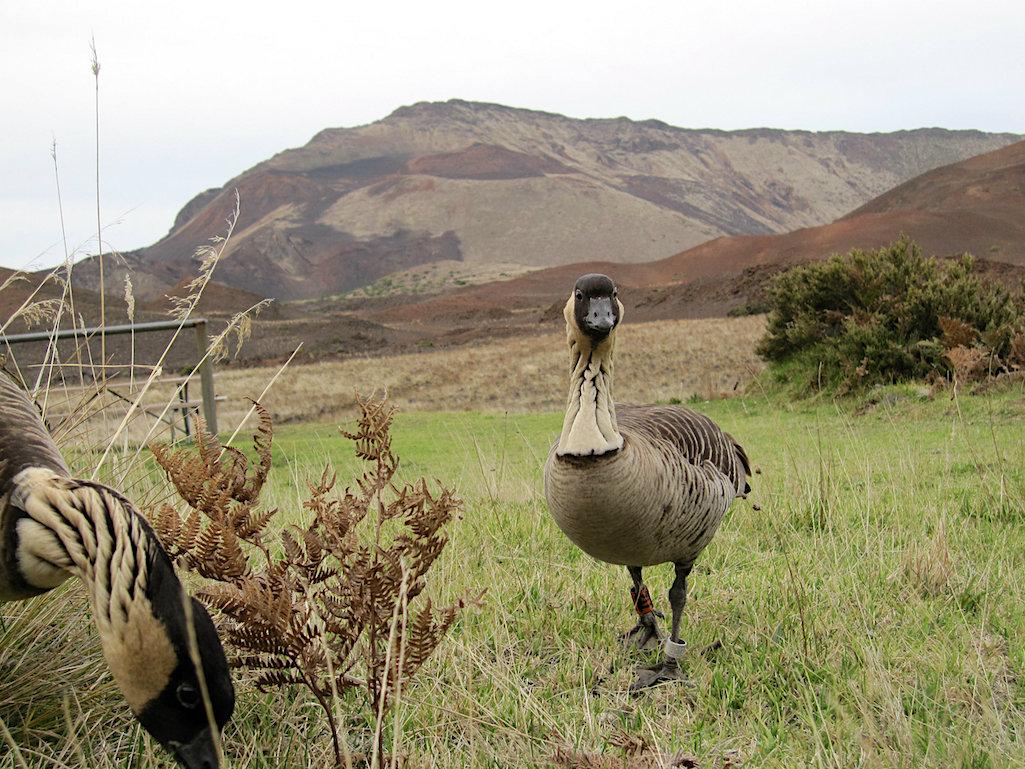
Two endangered nēnē recently were killed in collisions with motor vehicles at Haleakalā National Park/NPS file
Motorists at Haleakalā National Park in Hawaii hit and killed two endangered nēnē, or Hawaiian goose, in recent weeks, prompting park staff to urge visitors to slow down.
The most recent nēnē death was reported early Friday morning just after midnight near the Summit District park entrance station.
Park wildlife biologists noted the nēnē killed was a female and observed a lone male nēnē, presumed to be the female's mate, vocalizing nearby.
“During nesting season, when a nēnē loses its mate it usually results in total failure for that nēnē family. Any goslings that need rearing are likely to perish without both of its nēnē parents,” said wildlife biologist Joy Tamayose. “It may have a chance to find a mate before the next nesting season to try again, but we have observed that nēnē usually do not find another mate for the remainder of the nesting season.”
The other nēnē fatality occurred on the evening of December 23, near the headquarters visitor center just below the flashing nēnē crossing sign, which warns motorists to slow down and watch out for wildlife on the road. The nēnē struck was the male of the park’s first reported nesting pair with goslings in the 2021–2022 nesting season. The goslings have since died.
Nēnē nesting season occurs from October to May. Weather conditions at the summit of Haleakalā such as wind, rain, and poor visibility can make spotting nēnē difficult. Motorists can protect nēnē and other wildlife by:
- Following speed limits and driving with caution, especially near the park entrance and Headquarters Visitor Center.
- Looking out for wildlife on roadways. If you stop for wildlife, turn on your hazard lights and allow the animal to completely move off the road before continuing to drive.
- Planning like a park ranger and giving yourself plenty of time to make it to your destination in or outside of the park. This is especially important when driving at night for sunrise or sunset.
- Keeping wildlife wild by not feeding them. Feeding wildlife attracts them to hazardous locations like roadways or parking lots and can put them in dangerous situations.
- Inspecting the area around your vehicle for wildlife, especially underneath or behind your vehicle, before exiting a parking space.
To report injured nēnē or other wildlife in Haleakalā National Park, call 808-985-6170. If outside the park, call the Hawaii Department of Forestry and Wildlife at 808-984-8100. To learn more about nēnē, visit this site.



Comments
I hope that Haleakla will start to use the Red Bird, Dead Bird campaign like Yosemite does for the Red Bear Dead Bear. When we were visiting Yosemite National Park, the signs really seemed to catch visitors attention and reminded everyone to slow down!